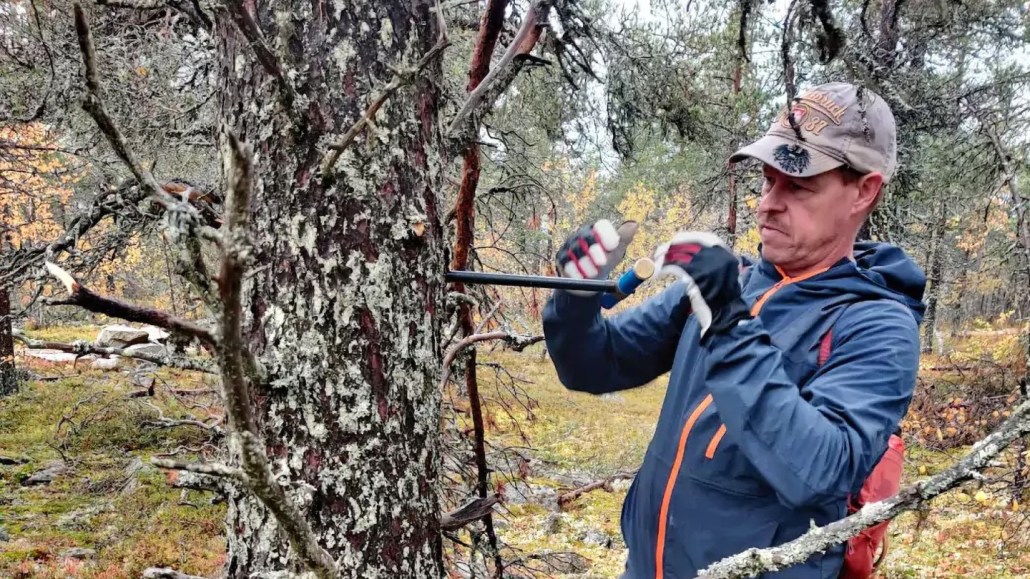
Polar trees contain records of past solar storms not always detectable in lower-latitude trees, researchers say. Here, nuclear physicist Markku Oinonen of the University of Helsinki takes a core from a tree in Finland's Lapland region to analyze its rings.
Joonas Uusitalo/Univ. of Helsinki